Marian University
Introduction
Text-to-speech Audio
Images
Candidates studying the Marian College library located in the Sisters of St. Agnes motherhouse, 1930s.
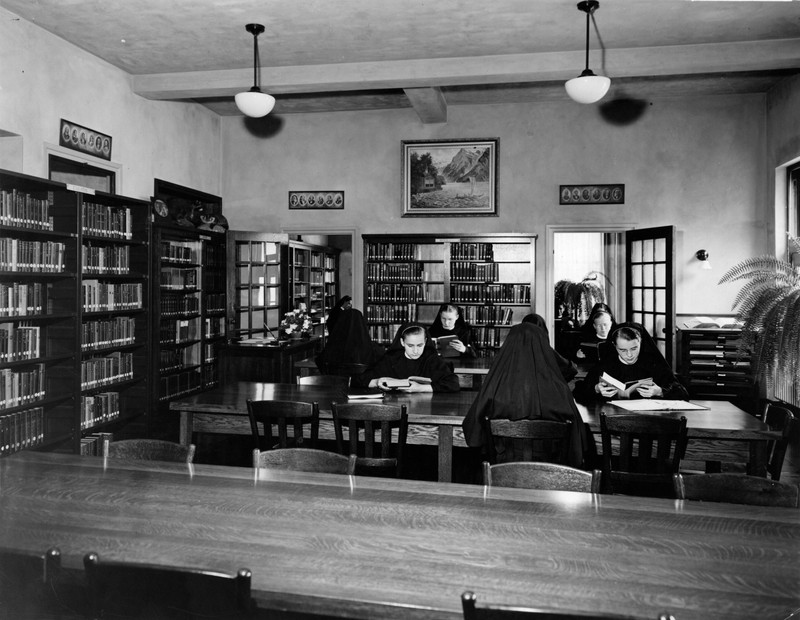
Aerial view of the Marian College campus, 1960s.
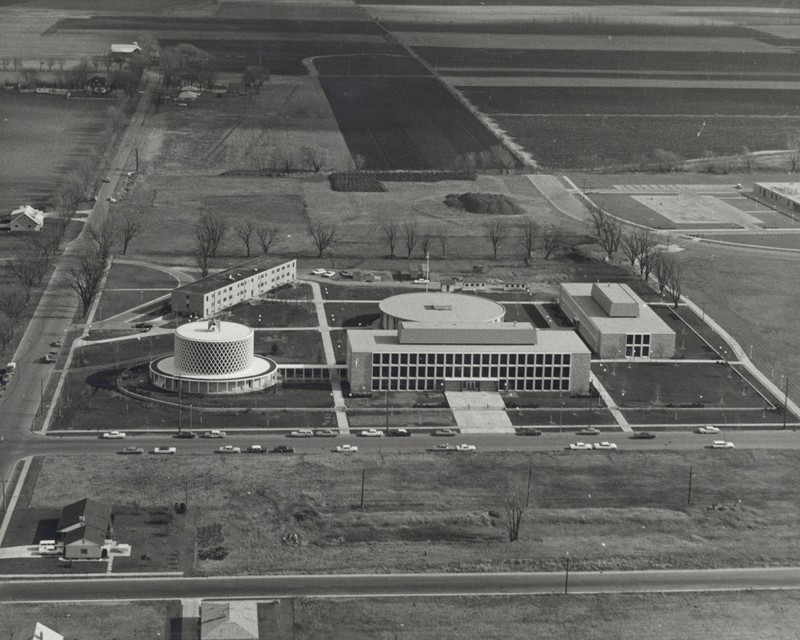
Hazotte Hall, first residence for Marian College students, located on Division Street, 1960s.
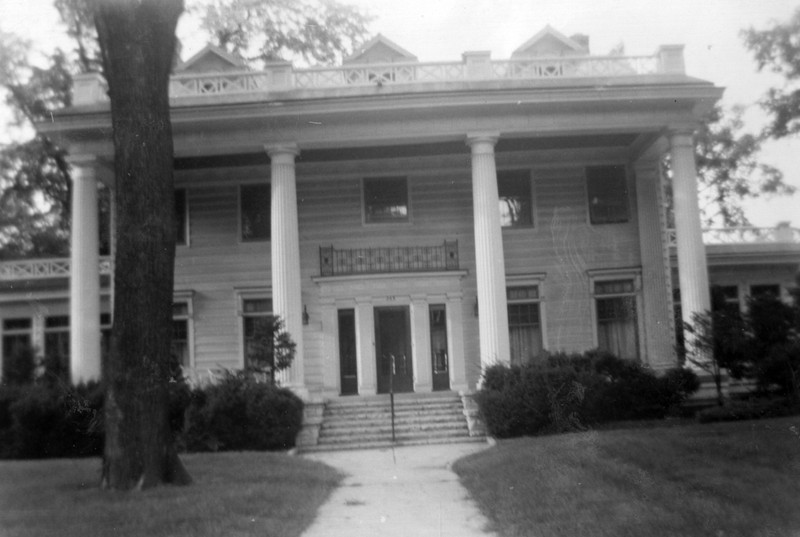
Two sisters walking through the Marian College campus, 1960s.
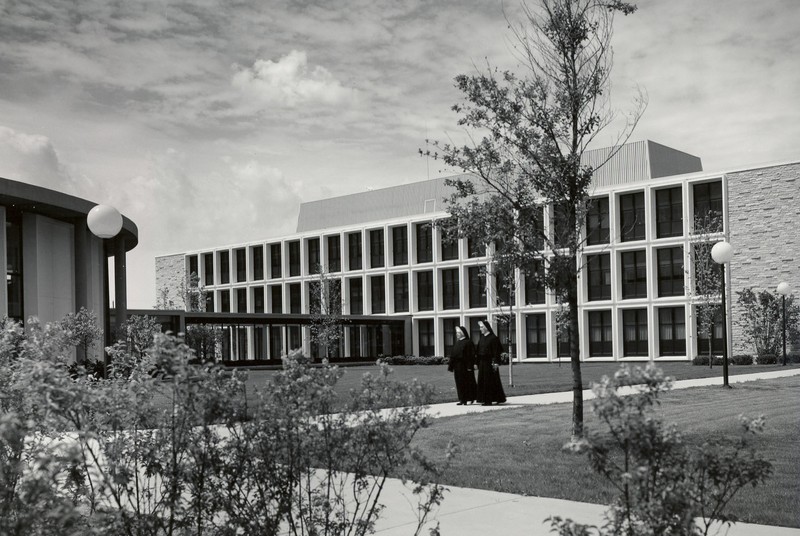
Sister Cyndi Nienhaus teaches a class at Marian University, 2018.
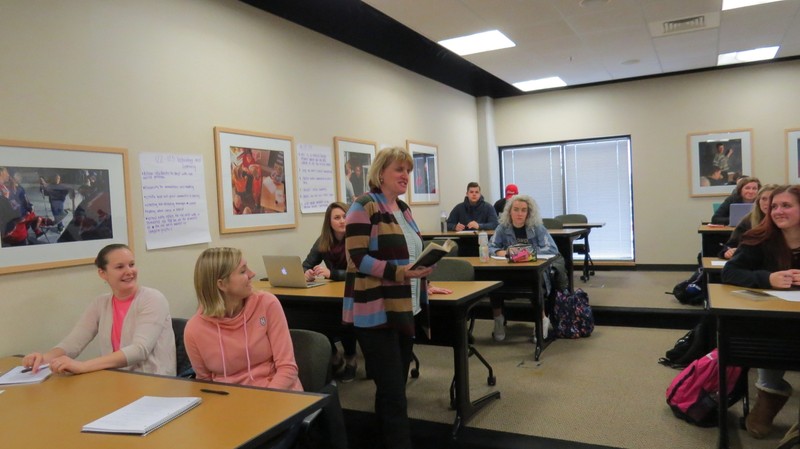
Backstory and Context
Text-to-speech Audio
The Congregation of Sisters of St. Agnes had opened Marian College in the east wing of their convent on Division Street in 1936, because the Wisconsin Department of Public Instruction would not allow student teachers into public schools to complete their training while wearing their habits. The college opened its doors on September 8, 1936, to 21 full-time students and 25 part-time students. Sister Vera Naber served as the first dean and the faculty consisted of four sisters and two priests. In the first year the curriculum included courses in German, history, algebra, apologetics, English, biology, Latin, art, psychology, and music. Classes were held in evenings and on Saturdays to accommodate sisters and rural teachers who were still working to complete their bachelor’s degrees.
By 1950, there were 86 full-time and 145 part-time students and the congregation realized they needed a new campus to accommodate expanding enrollments, provide modern science laboratories, and support more extensive library holdings. Sister Fidelis Karlin, President of Marian from 1952 to 1963, purchased a house on Division Street for a lay student residence, curriculum library for the education department, and space for Alpha Omega sorority to meet. The house was renamed Hazotte Hall and used as a residence from 1953 to 1962. Afterwards it was used as the elementary education center.
In 1960, Marian College was accredited by the North Central Association of Colleges and Schools and the congregation felt confident that the time had come to create a new college campus separate from the motherhouse. George Hutter, Jr., a local building contractor, donated 14.7 acres of land for a new residence hall, which would be called Regina Hall and opened in 1962. During the 1963 General Chapter, the congregation approved the construction of a 28-acre campus bordered by National Avenue and Division Street and designed for six to seven hundred students.
The campus buildings, made of precast concrete, limestone, and glass, were designed by architectural firm Schmidt Garden & Erikson. The first phase of construction, which began on May 1, 1965, included the administration and humanities building, the Ben Sadoff Science Building, and Cardinal Meyer Library. During the second phase of the project Dorcas Chapel, Hornung Student Center, and Naber Residence Hall were constructed. The entire project cost four million dollars, of which $1.6 million came from government grants and loans.
Dorcas Chapel was partially funded with a $10,000 donation from Father Benjamin Blied, a longtime instructor at the college. Blied wanted to honor the women of the church involved in domestic work and requested the chapel be named after Dorcas who made clothes for the poor and was healed by St. Peter. The circular chapel represents a sewing basket while the cross atop the chapel depicts a needle. The chapel’s stained-glass windows were designed by Gabriel Loire of Chartres, France. The Wausau Tile and Terrazzo Company earned national citation of merit for superior craftsmanship from the National Terrazzo and Mosaic Association for their work on the chapel.
In 1964, Marian began accepting nursing students into its BS Nursing program as St. Agnes School of Nursing began to wind down its program before graduating its final class in 1966. During the 1969 Chapter, the congregation decided to admit men to the college, appoint lay people to the board of trustees, and consider the appointment of a layperson as president of the college. The first lay president, James Hanlon, served from 1971 to 1979.
In 1972, Marian joined the Wisconsin Independent College Athletic Conference with men’s and women’s basketball teams. That same year, the college contracted with George Hutter to build Greenbriar apartments to house the influx of mostly male students. The college opened the Howard L. Sadoff Gymnasium in 1982 and expanded academic offerings as enrollment continued to grow through the 1990s and 2000s. The Stayer Center for Technology & Executive Learning was added to the campus in 2001, and the construction of Smith Soccer Fields, Herr-Baker Baseball Field, and Lenz Field House between 2002 and 2011 enhanced Marian’s athletic program, which joined the NCAA in 1999.
In 2008, Marian College added five new schools to the traditional two and transitioned to university status. In 2018, Marian celebrated the opening of the newly renovated science building, renamed for former president Richard Ridenour and his wife Leslie. The campus now comprises 78 acres of land.
Through its sponsorship and the active ministry of sisters on campus, the Congregation of Sisters of St. Agnes continues to support Marian University’s commitment to providing value-based education for traditional and adult students more than 80 years after its founding in the CSA motherhouse.
Cite This Entry
Lukomski, Jenny. "Marian University." Clio: Your Guide to History. July 13, 2020. Accessed April 11, 2025. https://theclio.com/entry/97641
Sources
Lorimer, CSA, Margaret. Ordinary Sisters: The Story of the Sisters of St. Agnes, 1858-1990. Fond du Lac, Wisconsin. Congregation of Sisters of St. Agnes, 2007.
Marian University. “History.” Accessed March 3, 2020. https://www.marianuniversity.edu/about/history/.
Wisconsin Historical Society, Wisconsin Architecture and History Inventory, Dorcas Chapel (at Marian College), Fond du Lac, Fond du Lac County, Wisconsin, 151781.
Congregation of Sisters of St. Agnes Archives
Congregation of Sisters of St. Agnes Archives
Congregation of Sisters of St. Agnes Archives
Congregation of Sisters of St. Agnes Archives
Congregation of Sisters of St. Agnes Archives

